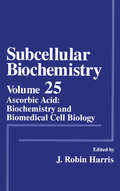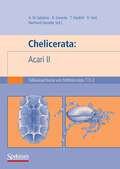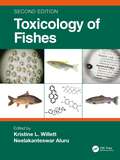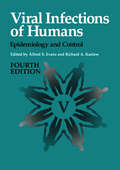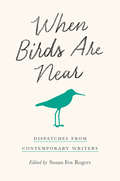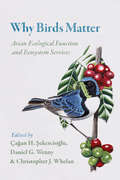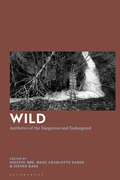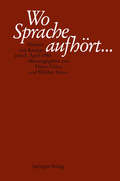- Table View
- List View
Stoat (UEB Contracted)
This is a picture of a stoat viewed from the side and facing to the left. There is a locator dot shown, which will be at the top left of the page when the image is the right way up. On the far left is the stoat's head with his nose, one eye and two ears visible. The stoat's long body is slightly down and to the right with its tail on the far right of the page. There are white patches on the stoat's throat and belly. The stoat's four legs can be found down from its body towards the bottom of the page.
Stoat (UEB uncontracted)
This is a picture of a stoat viewed from the side and facing to the left. There is a locator dot shown, which will be at the top left of the page when the image is the right way up. On the far left is the stoat's head with his nose, one eye and two ears visible. The stoat's long body is slightly down and to the right with its tail on the far right of the page. There are white patches on the stoat's throat and belly. The stoat's four legs can be found down from its body towards the bottom of the page.
Subcellular Biochemistry: Ascorbic Acid: Biochemistry and Biomedical Cell Biology (Subcellular Biochemistry #25)
In Volume 25, leading experts present studies on the value of increased ascorbic acid intake and explore its specific contributions to human and animal health.
Süßwasserfauna von Mitteleuropa, Bd. 7/2-2 Chelicerata: Acari 2 (Süßwasserfauna von Mitteleuropa)
Chelicerata are a basically terrestrial group of invertebrates, including many clades whose representatives have never found an evolutionary way to aquatic live. An exception is made by some spiders and the highly diverse aquatic mites which in inland water habitats are represented by members of numerous different clades having evolved an aquatic or amphibious lifestyle along various evolutionary pathways. For the first time in limnofaunistic bibliography, the present taxonomic knowledge about these different groups of invertebrates is brought together in an overview for the Central-European fauna. This second volume includes taxonomic keys and ecological information for the two species-rich superfamilies Hydryphantoidea and Lebertioidea of the freshwater mites (Hydrachnidia). A further volume in preparation will include the remaining two superfamilies, Hygrobatoidea and Arrenuroidea. The chelicerata volumes of this series are a basic tool for all limnologists interested in diversity and ecology - in particular for biologists investigating the ecotones between ground- and surface water, between benthos and plankton, and between water and land.
Tiger (Large Print)
The tiger is shown from the side with its head at the right and tail at the left of the page. There is a locator dot shown, which will be at the top left of the page when the image is the right way up. Its head is turned to face you. It is a great big cat, whose fur is patterned with stripes. The tiger's two ears stick up on top of its head. Below the ears are two oval eyes, its nose and mouth. To the left of the tiger's head is its striped body standing on all four legs each with paws. To the left of the page its striped tail is sticking up in the air.
Tiger (UEB contracted)
The tiger is shown from the side with its head at the right and tail at the left of the page. There is a locator dot shown, which will be at the top left of the page when the image is the right way up. Its head is turned to face you. It is a great big cat, whose fur is patterned with stripes. The tiger's two ears stick up on top of its head. Below the ears are two oval eyes, its nose and mouth. To the left of the tiger's head is its striped body standing on all four legs each with paws. To the left of the page its striped tail is sticking up in the air.
Tiger (UEB uncontracted)
The tiger is shown from the side with its head at the right and tail at the left of the page. There is a locator dot shown, which will be at the top left of the page when the image is the right way up. Its head is turned to face you. It is a great big cat, whose fur is patterned with stripes. The tiger's two ears stick up on top of its head. Below the ears are two oval eyes, its nose and mouth. To the left of the tiger's head is its striped body standing on all four legs each with paws. To the left of the page its striped tail is sticking up in the air.
Toxicology of Fishes
This up-to-date, comprehensive toxicology handbook is devoted to the effects of environmental pollution on fish. Fish species represent nearly half of all vertebrates and have become important sentinels for environmental contamination and model organisms for understanding adverse outcomes from exposures. This new edition is written by recognized experts, and it highlights the significant research progress in fish toxicology that has resulted from rapid technological developments in analytical, biochemical, and genomic sciences. The book: Discusses fundamental topics such as toxicokinetics in fishes, processes governing biotransformation within these organisms, and reactive oxygen species and oxidative stress. Explains key target organ systems for chemical impacts in fish, such as the nervous and immune systems, and how fishes can develop resistance to chemical toxicity. Covers multi-transgenerational effects on fishes, epigenetics, proteomics and metabolomics, and adverse outcome pathways. Replacing the case studies in the first edition, this update delves into the impacts of microplastics, pharmaceuticals, and oil spills in dedicated final chapters. With nearly 200 illustrations and tables, this comprehensive reference work presents concepts in a way that is useful for both novices to and experts in the field of fish toxicology.
Understories: Plants and Culture in the American Tropics (American Tropics: Towards a Literary Geography #9)
Understories: Plants and Culture in the American Tropics establishes the central importance of plants to the histories and cultures of the extended tropical region stretching from the U.S. South to Argentina. Through close examination of a number of significant plants – cacao, mate, agave, the hevea brasilensis, kudzu, the breadfruit, soy, and the ceiba pentandra, among others – this volume shows that vegetal life has played a fundamental role in shaping societies and in formulating cultural and environmental imaginaries in and beyond the region. Drawing on a wide range of cultural traditions and forms across literature, popular music, art, and film, the essays included in this volume transcend regional and linguistic boundaries to bring together multiple plant-centred histories or ‘understories’ – narratives that until now have been marginalized or gone unnoticed. Attending not only to the significant influence of humans on plants, but also of plants on humans, this book offers new understandings of how colonization, globalization, and power were, and continue to be, imbricated with nature in the American tropics.
Viral Infections of Humans: Epidemiology and Control
I prepared this preface to the fourth edition of Viral Infections of Humans alone and with mixed emotions. It was immensely gratifying when Al Evans invited me to join him in producing the new edition. After following at a distance his exemplary career as a scholar and gentleman in every sense of those words, I was filled with anticipation at the privilege of observing close at hand the thoughtful dedication he had previously brought to editorial process. However, work together soon the our was overshadowed by the condition that would slowly take him from our task and our midst. As we both increasingly realized that his declining health might prevent him from seeing this final product, the initial gratification that I had felt gave way to a sense of awesome responsibility for perpetuating his masterful blend of science and literacy. From the earliest days in the planning of this revision, Al and I recognized the profound changes taking place both in the knowledge of viral infections and in the way that knowledge was being gathered. With all of biomedical science moving in the rush of revolution, every discipline generating information relevant to this text-from virology, immunology, and pharmacology to epidemiology and neuropsychology-has been swept along in the torrent, propelled principally by two synergizing technologic forces: molecular biology and cybernetics.
Vole (UEB Contracted)
This is a picture of a vole viewed from the side and facing to the left. There is a locator dot shown, which will be at the top left of the page when the image is the right way up. On the far left is the vole's head with his nose, whiskers, one eye and one ear visible. The vole's body is to the right, with its tail on the far right of the page. Two of the vole's legs can be found down from its body towards the bottom of the page. The other two legs are hidden behind the body.
Vole (UEB uncontracted)
This is a picture of a vole viewed from the side and facing to the left. There is a locator dot shown, which will be at the top left of the page when the image is the right way up. On the far left is the vole's head with his nose, whiskers, one eye and one ear visible. The vole's body is to the right, with its tail on the far right of the page. Two of the vole's legs can be found down from its body towards the bottom of the page. The other two legs are hidden behind the body.
When Birds Are Near: Dispatches from Contemporary Writers
In this dazzling literary collection, writers explore and celebrate their lives with and love for birds—detailing experiences from Alaska to Bermuda, South Dakota to Panama. In When Birds Are Near, fresh new voices as well as seasoned authors offer tales of adventure, perseverance, and fun, whether taking us on a journey down Highway 1 to see a rare California Condor, fighting the destruction of our grasslands, or simply watching the feeder from a kitchen window.But these essays are more than just field notes. The authors reflect on love, loss, and family, engaging a broad array of emotions, from wonder to amusement. As Rob Nixon writes, "Sometimes the best bird experiences are defined less by a rare sighting than by a quality of presence, some sense of overall occasion that sets in motion memories of a particular landscape, a particular light, a particular choral effect, a particular hiking partner." Or, as the poet Elizabeth Bradfield remarks, "We resonate with certain animals, I believe, because they are a physical embodiment of an answer we are seeking. A sense of ourselves in the world that is nearly inexpressible." When Birds Are Near gives us the chance to walk alongside these avid appreciators of birds and reflect on our own interactions with our winged companions.Contributors: Christina Baal, Thomas Bancroft, K. Bannerman, R. A. Behrstock, Richard Bohannon, Elizabeth Bradfield, Christine Byl, Susan Cerulean, Sara Crosby, Jenn Dean, Rachel Dickinson, Katie Fallon, Jonathan Franzen, Andrew Furman, Tim Gallagher, David Gessner, Renata Golden, Ursula Murray Husted, Eli J. Knapp, Donald Kroodsma, J. Drew Lanham, John R. Nelson, Rob Nixon, Jonathan Rosen, Alison Townsend, Alison Világ
Why Birds Matter: Avian Ecological Function and Ecosystem Services
For over one hundred years, ornithologists and amateur birders have jointly campaigned for the conservation of bird species, documenting not only birds’ beauty and extraordinary diversity, but also their importance to ecosystems worldwide. But while these avian enthusiasts have noted that birds eat fruit, carrion, and pests; spread seed and fertilizer; and pollinate plants, among other services, they have rarely asked what birds are worth in economic terms. In Why Birds Matter, an international collection of ornithologists, botanists, ecologists, conservation biologists, and environmental economists seeks to quantify avian ecosystem services—the myriad benefits that birds provide to humans. The first book to approach ecosystem services from an ornithological perspective, Why Birds Matter asks what economic value we can ascribe to those services, if any, and how this value should inform conservation. Chapters explore the role of birds in such important ecological dynamics as scavenging, nutrient cycling, food chains, and plant-animal interactions—all seen through the lens of human well-being—to show that quantifying avian ecosystem services is crucial when formulating contemporary conservation strategies. Both elucidating challenges and providing examples of specific ecosystem valuations and guidance for calculation, the contributors propose that in order to advance avian conservation, we need to appeal not only to hearts and minds, but also to wallets.
Wild: Aesthetics of the Dangerous and Endangered
In this interdisciplinary work, philosophers from different specialisms connect with the notion of the wild today and interrogate how it is mediated through the culture of the Anthropocene. They make use of empirical material like specific artworks, films and other cultural works related to the term 'wild' to consider the aesthetic experience of nature, focusing on the untamed, the boundless, the unwieldy, or the unpredictable; in other words, aspects of nature that are mediated by culture. This book maps out the wide range of ways in which we experience the wildness of nature aesthetically, relating both to immediate experience as well as to experience mediated through cultural expression. A variety of subjects are relevant in this context, including aesthetics, art history, theology, human geography, film studies, and architecture. A theme that is pursued throughout the book is the wild in connection with ecology and its experience of nature as both a constructive and destructive force.
Wo Sprache aufhört....: Herbert von Karajan zum 5. April 1988
Die einzelnen Beiträge aus den verschiedensten Wissensgebieten der Natur- und Geisteswissenschaft geben ein biographisches Abbild von der Vielfalt der Interessen des Jubilars:
Wolf (Large Print)
This is an image of a wolf in its pale grey winter coat shown from the side, with its head on the top left of the page and tail on the right. There is a locator dot shown, which will be at the top left of the page when the image is the right way up.In the top left of the page is the wolf's raised head. It is howling so its mouth is open and shows some sharp pointed teeth. Above its mouth is its small nostril on the tip of its nose, then to the right one eye and a pointed ear.Down towards the centre of the page the wolf's thick neck leads to its furry body. The wolf stands on four legs, with its paws at the bottom of the page. On the right is the wolf's long thick furry tail.
Wolf (UEB Contracted)
This is an image of a wolf in its pale grey winter coat shown from the side, with its head on the top left of the page and tail on the right. There is a locator dot shown, which will be at the top left of the page when the image is the right way up.In the top left of the page is the wolf's raised head. It is howling so its mouth is open and shows some sharp pointed teeth. Above its mouth is its small nostril on the tip of its nose, then to the right one eye and a pointed ear.Down towards the centre of the page the wolf's thick neck leads to its furry body. The wolf stands on four legs, with its paws at the bottom of the page. On the right is the wolf's long thick furry tail.
Wolf (UEB Uncontracted)
This is an image of a wolf in its pale grey winter coat shown from the side, with its head on the top left of the page and tail on the right. There is a locator dot shown, which will be at the top left of the page when the image is the right way up.In the top left of the page is the wolf's raised head. It is howling so its mouth is open and shows some sharp pointed teeth. Above its mouth is its small nostril on the tip of its nose, then to the right one eye and a pointed ear.Down towards the centre of the page the wolf's thick neck leads to its furry body. The wolf stands on four legs, with its paws at the bottom of the page. On the right is the wolf's long thick furry tail.
Wood pigeon (Large Print)
This is an image of a common British wood pigeon viewed from the side and facing left, so only one eye and one wing can be found. There is a locator dot shown, which will be at the top left of the page when the image is the right way up.The wood pigeon is mostly shades of grey with markings on its neck. The wood pigeon's head is in the top left of the page, with its beak on the left and one of its eyes slightly to the right. Down from this the bird has an iridescent green patch and a white patch on its neck. Further down is its pinkish grey chest and to the right of this the wood pigeon's wing and tail.At the bottom centre of the page the wood pigeon's two red legs and feet can be found, each with three toes pointing to the left and one to the right.
Wood pigeon (UEB Contracted)
This is an image of a common British wood pigeon viewed from the side and facing left, so only one eye and one wing can be found. There is a locator dot shown, which will be at the top left of the page when the image is the right way up.The wood pigeon is mostly shades of grey with markings on its neck. The wood pigeon's head is in the top left of the page, with its beak on the left and one of its eyes slightly to the right. Down from this the bird has an iridescent green patch and a white patch on its neck. Further down is its pinkish grey chest and to the right of this the wood pigeon's wing and tail.At the bottom centre of the page the wood pigeon's two red legs and feet can be found, each with three toes pointing to the left and one to the right.
Wood pigeon (UEB Uncontracted)
This is an image of a common British wood pigeon viewed from the side and facing left, so only one eye and one wing can be found. There is a locator dot shown, which will be at the top left of the page when the image is the right way up.The wood pigeon is mostly shades of grey with markings on its neck. The wood pigeon's head is in the top left of the page, with its beak on the left and one of its eyes slightly to the right. Down from this the bird has an iridescent green patch and a white patch on its neck. Further down is its pinkish grey chest and to the right of this the wood pigeon's wing and tail.At the bottom centre of the page the wood pigeon's two red legs and feet can be found, each with three toes pointing to the left and one to the right.
Wren (Large Print)
This is an image of a wren (called a winter wren in North America) viewed from the side and facing left so that only one eye and one wing can be found. There is a locator dot shown, which will be at the top left of the page when the image is the right way up. The wren is a very small brown bird in the centre of the page. Its head is on the left of the image with its open brown beak on the left and one of its eyes slightly to the right with a white horizontal marking above it. One of its wings is down and right and above this its erect tail.The wren's two pink legs and feet are at the bottom of the image. Each has three toes pointing to the left and one to the right.
Wren (UEB Contracted)
This is an image of a wren (called a winter wren in North America) viewed from the side and facing left so that only one eye and one wing can be found. There is a locator dot shown, which will be at the top left of the page when the image is the right way up. The wren is a very small brown bird in the centre of the page. Its head is on the left of the image with its open brown beak on the left and one of its eyes slightly to the right with a white horizontal marking above it. One of its wings is down and right and above this its erect tail.The wren's two pink legs and feet are at the bottom of the image. Each has three toes pointing to the left and one to the right.
Wren (UEB Uncontracted)
This is an image of a wren (called a winter wren in North America) viewed from the side and facing left so that only one eye and one wing can be found. There is a locator dot shown, which will be at the top left of the page when the image is the right way up. The wren is a very small brown bird in the centre of the page. Its head is on the left of the image with its open brown beak on the left and one of its eyes slightly to the right with a white horizontal marking above it. One of its wings is down and right and above this its erect tail.The wren's two pink legs and feet are at the bottom of the image. Each has three toes pointing to the left and one to the right.

